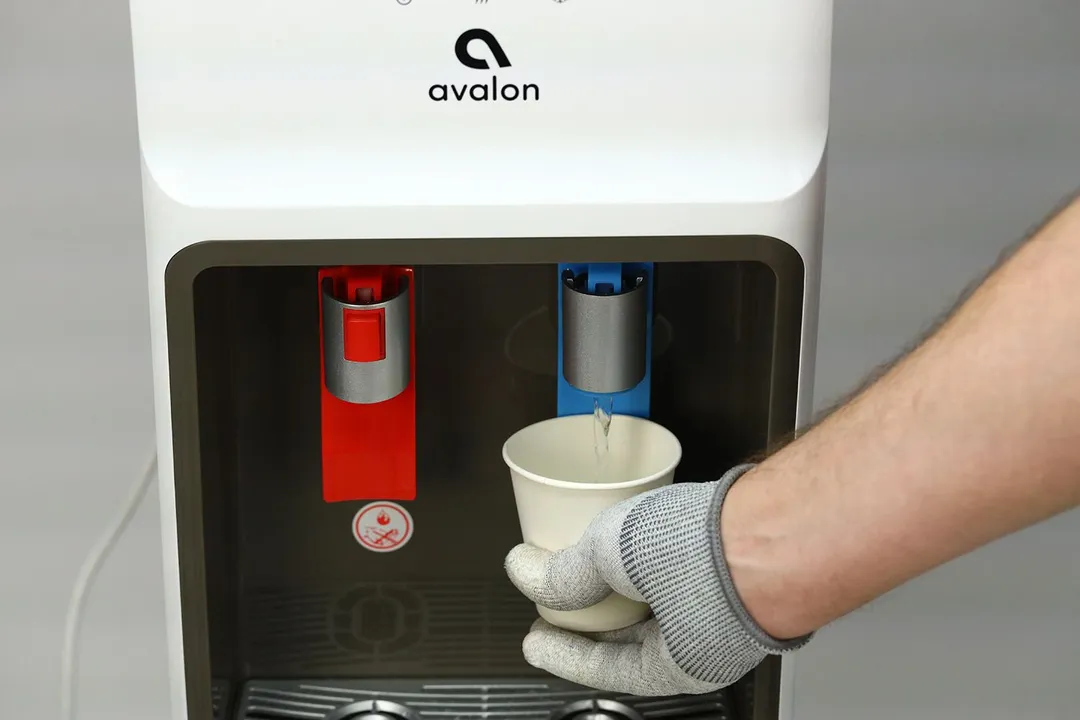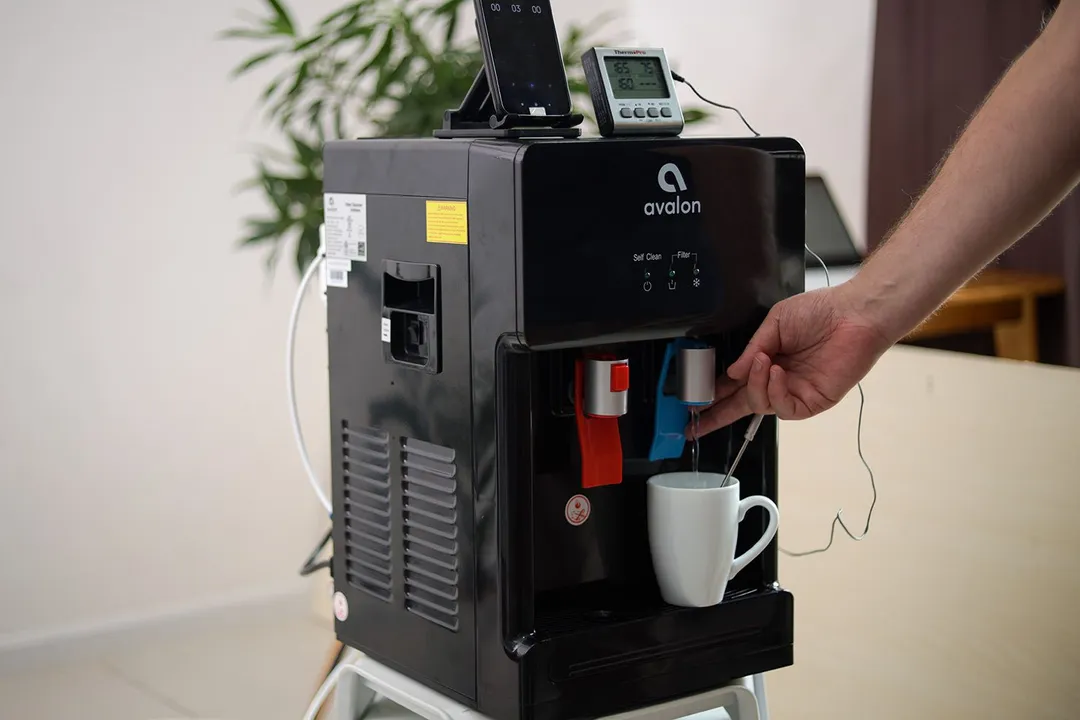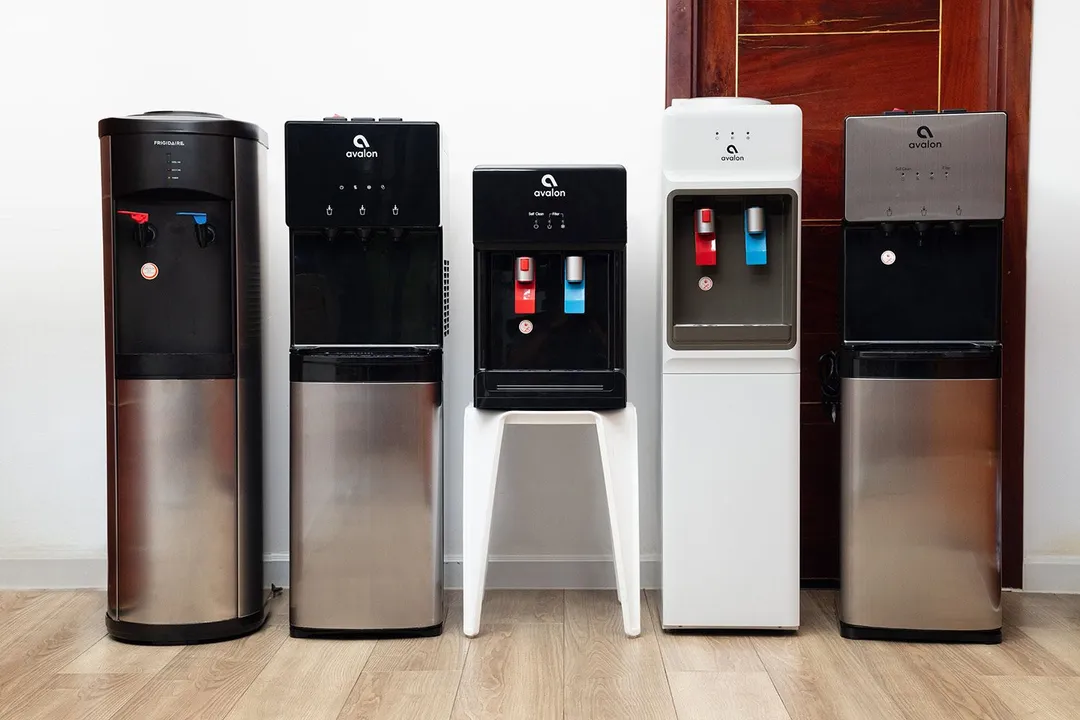Our recommendations are made independently through Research & Testing. We may receive commissions from purchases made via our links.
Things to Keep in Mind When Buying a Water Cooler Dispenser
Seven things to keep in mind when buying a water cooler dispenser. Know what really matters, and make the right choice.
A water cooler dispenser is a relatively simple appliance that provides both chilled and hot water on tap. More basic dispensers may only provide chilled water, but these tend to be smaller countertop varieties.
There are basically four types of water cooler dispensers to choose from. It’s best to first decide which type would best serve your needs including your budget.
Perhaps you’re interested in a family-friendly bottom loading water cooler dispenser for their ease of use or their often more premium features? Maybe you just want a basic top-loading machine? The other route to go is a water cooler dispenser with its own filtration system.
1. Overall Good Design
Great performance can be overshadowed by poor button or faucet design since people use the machine multiple times a day. Likewise, nice buttons or levers won’t make up for poor performance. Good performance isn’t immediately apparent so, for starters, you can look at our detailed tests and appraisals of some of the best water cooler dispensers out there.

2. Cold Water Capacity
It’s important to consider whether your machine needs to meet the demands of a large working group or public space. Our tests show that the best performing water cooler dispensers can provide around 6 L of chilled water per hour. This is enough for a group or work-span of 20 people with a 300 ml glass of water being dispensed every three minutes.
For a family home or typical household, a water cooler dispenser can easily provide all the chilled water you would need. Therefore, you may want to focus on other things like hot water capacity, improved dispensing, or extra sanitary features.
3. Hot Water Temperatures
Most machines have a high temperature of 198℉ (92.2℃), while others max out at around 189℉ (87.2℃). The latter is more suitable for instant coffee and green tea and may be safer for a public area. Some offices may prefer a lower temperature range.
The amount of hot water you can get back-to-back can be important for morning or lunch-hour rush times. Of course, larger tanks take longer to heat, so it's best to look at the hot water capacity per hour.

4. Buttons, Levers, Faucets, or Sensors
Regardless of what type of water cooler dispenser you buy, you usually have a range of dispensing mechanisms to choose from. Although top-loading machines are more likely to use old-style push levers and faucets, some have buttons and even touchless sensors.
Buttons are often not the most hygienic for cleaning, especially in between. However, buttons are easier for children to use while badly designed faucets can be annoying on an office water cooler. More modern designs can often feature touch panel buttons or motion sensors.
5. Touchless Dispensing and Ambient water
Nowadays, touchless dispensing (for cold water, at least) is common among high-usage machines in public spaces, or even the office. Lever-type machines are the cheapest option that can provide touchless dispensing for cold water. Fully touchless sensors are making market inroads, but they can be pricey. Other designs use a foot pedal.
Many, but not all, water cooler dispensers dispense ambient water, or water that comes straight from the bottle or in-line source. Some people don’t like cold water and ambient water is useful for cooking, so you may need to consider this.
6. Cleaning and Sanitary Features
Machines with built-in UV or ozone functions are much more sanitary. Without these features, water lines generally only get cleaned every four to six months during descaling. For button designs, make sure it’s easy to clean in between the buttons. Similarly, spouts and faucets that can detach are more cleanable than fixed ones.
7. Don’t Forget About the Drip Tray
Make sure the drip tray fits securely and cannot easily be yanked out by a child. Better drip trays require you to lift them up and then pull them out. Check to see if the drip tray is spacious enough or safe for resting a mug cup. Lever designs often require you to hold the cup while dispensing and may not accommodate a jug or tumbler.
Remember - Your Dispenser is Only as Good as Your Water!
If you choose a bottled water dispenser, you should also research a high-quality, trustworthy water provider. Some manufacturers and distributors have their own brand of water or contract with specific providers.
Depending on where you live, you may be able to refill your bottles at a supermarket, a self-service point, or a trusted natural water source. For this, you can also purchase a reusable BPA-free 5-gallon bottle.
For a bottleless water cooler dispenser with a filter it’s easy enough to buy replacement filters online, from your local distributor, or at a home center. Unlike refrigerator water filters, there are not many off-brand generic filters available, but some typical in-line filters may work.
About your tip
Roger Shitaki is a writer, author, and editor. His niches are household appliances, health & wellness, and travel. He’s a freelance contributor to a Tokyo lifestyle website and a leading ophthalmology magazine in Asia.


